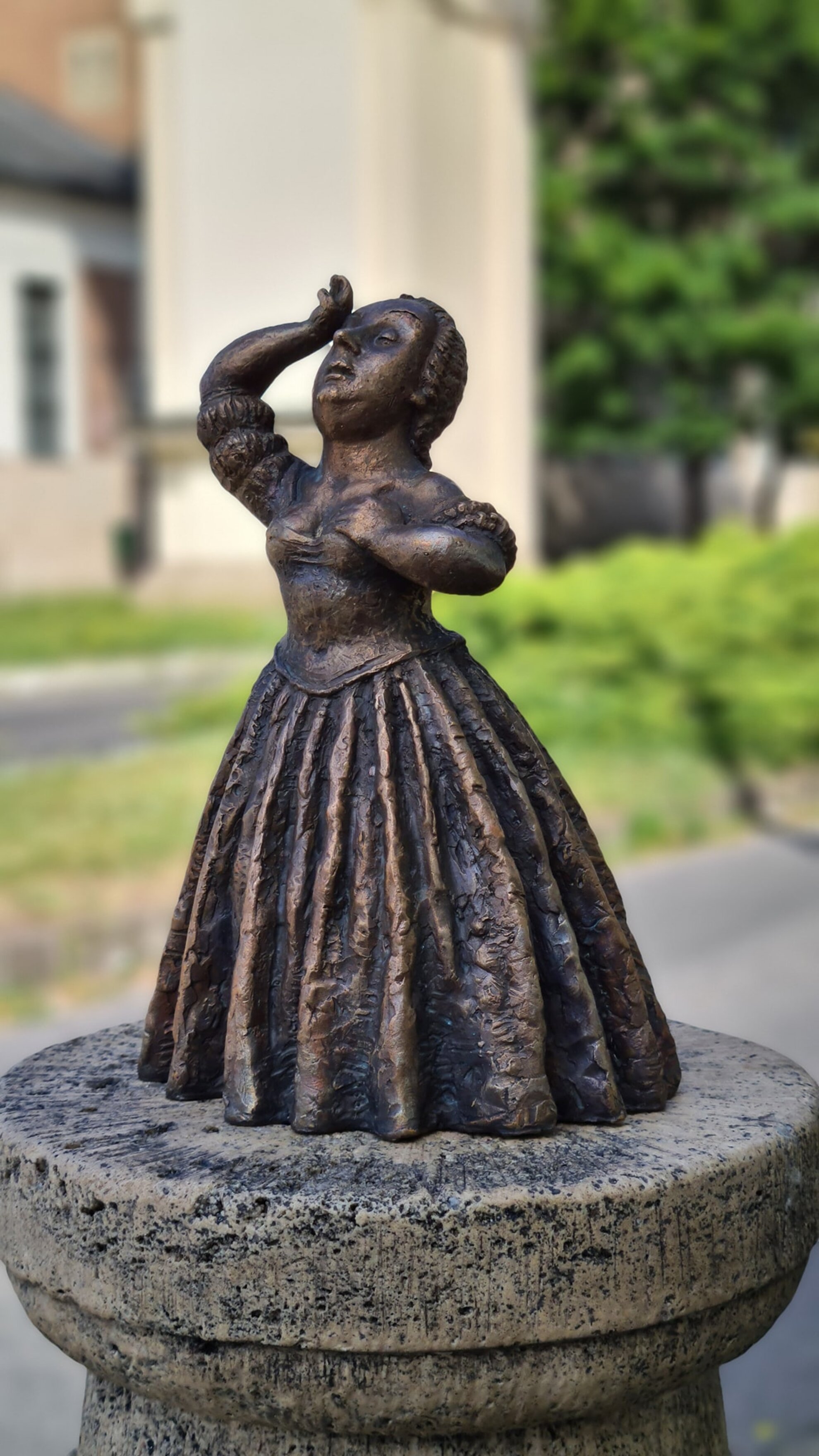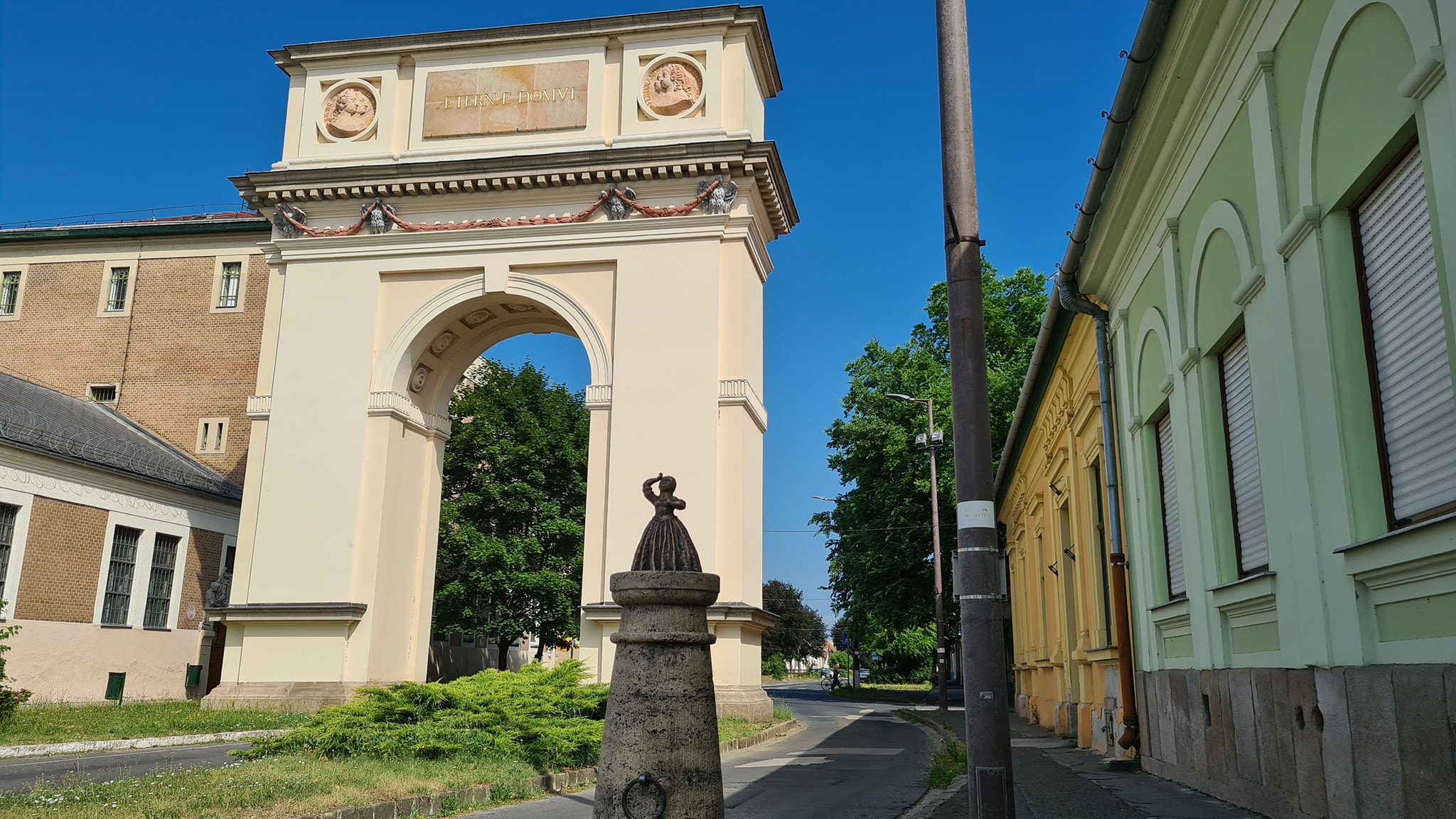Taking his lead from Bernini’s celebrated The Ecstasy of Saint Teresa in Rome, guerrilla sculptor Mihajlo Kolodko has produced The Ecstasy of Maria Theresa, casting in bronze the dilemma of the 18th-century Habsburg empress as she throws back her head in overdramatic dismay and clutches her breast.
Invited to Vác by Bishop Antal Kristóf Migazzi, she was famously unwilling to pass under a triumphal arch hastily thrown up in five months in order to time with her visit. Reliefs of the empress and her husband, Francis I, stare out from the top of the arch to this day.

Maria Theresa had travelled with her family downstream from Bratislava and was greeted on the Vác riverfront by city dignitaries and the Dukes of Vienna on horseback. From there, she was taken the short distance inland, an area now occupied by Vác Prison, for her and offspring to wave to their subjects from their carriage as it crossed the short distance beneath the arch four metres thick.
Fearing it unsafe, the esteemed guest decided to walk around it instead. It is said that five days later she did, in fact, go under it – but that, again, may be wishful urban myth.
As well as the figurine, Kolodko also created this video, showing how he made it and then placed it by the monument.
See the new Kolodko
To see Kolodko's creation, Vác is a 30-minute train ride from Rákospalota-Újpest. The arch is a ten-minute walk from the station towards the Danube, along Naszály út and Zrínyi Miklós utca, turning left at II. Rákóczi Ferenc tér.




